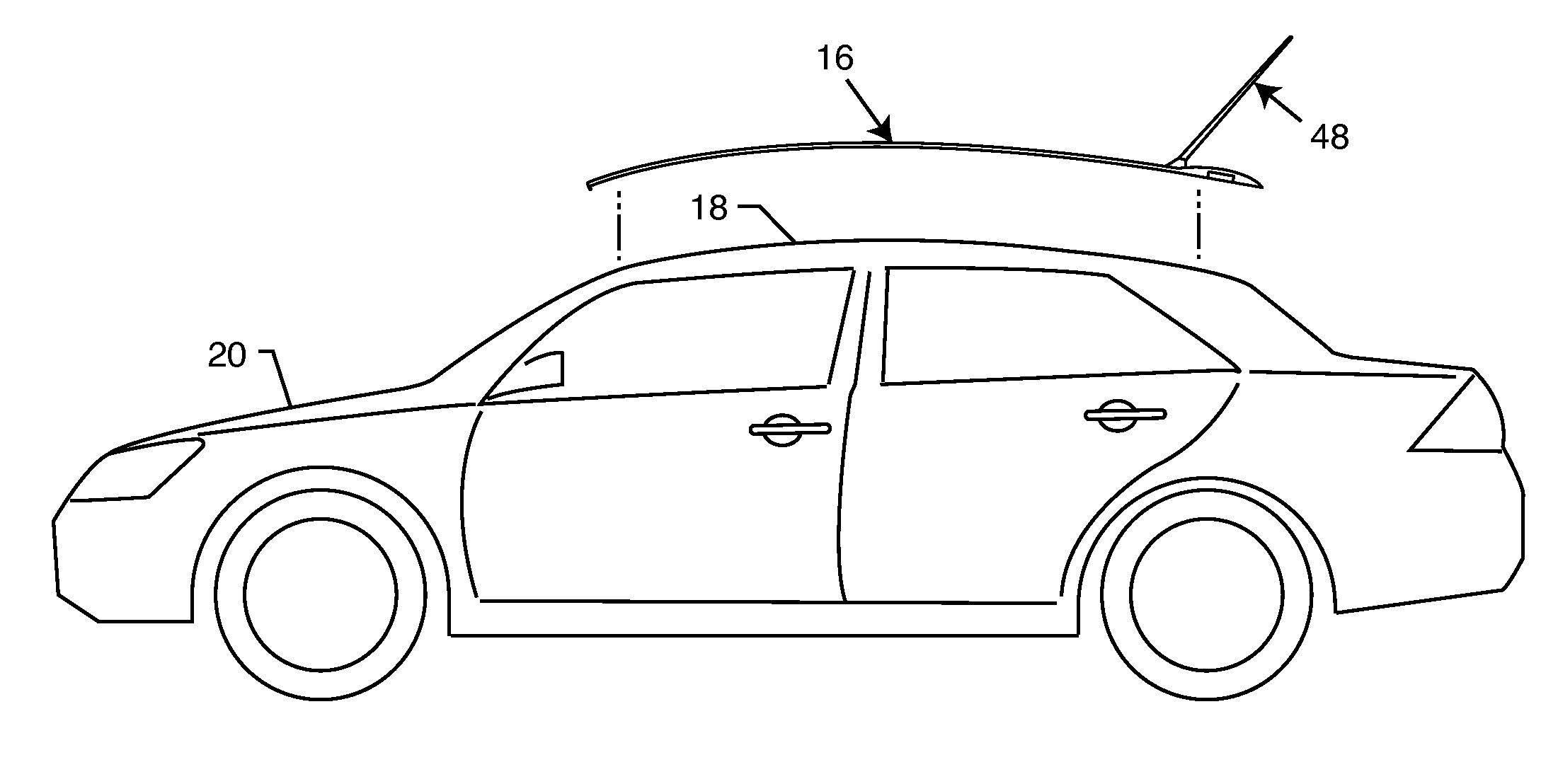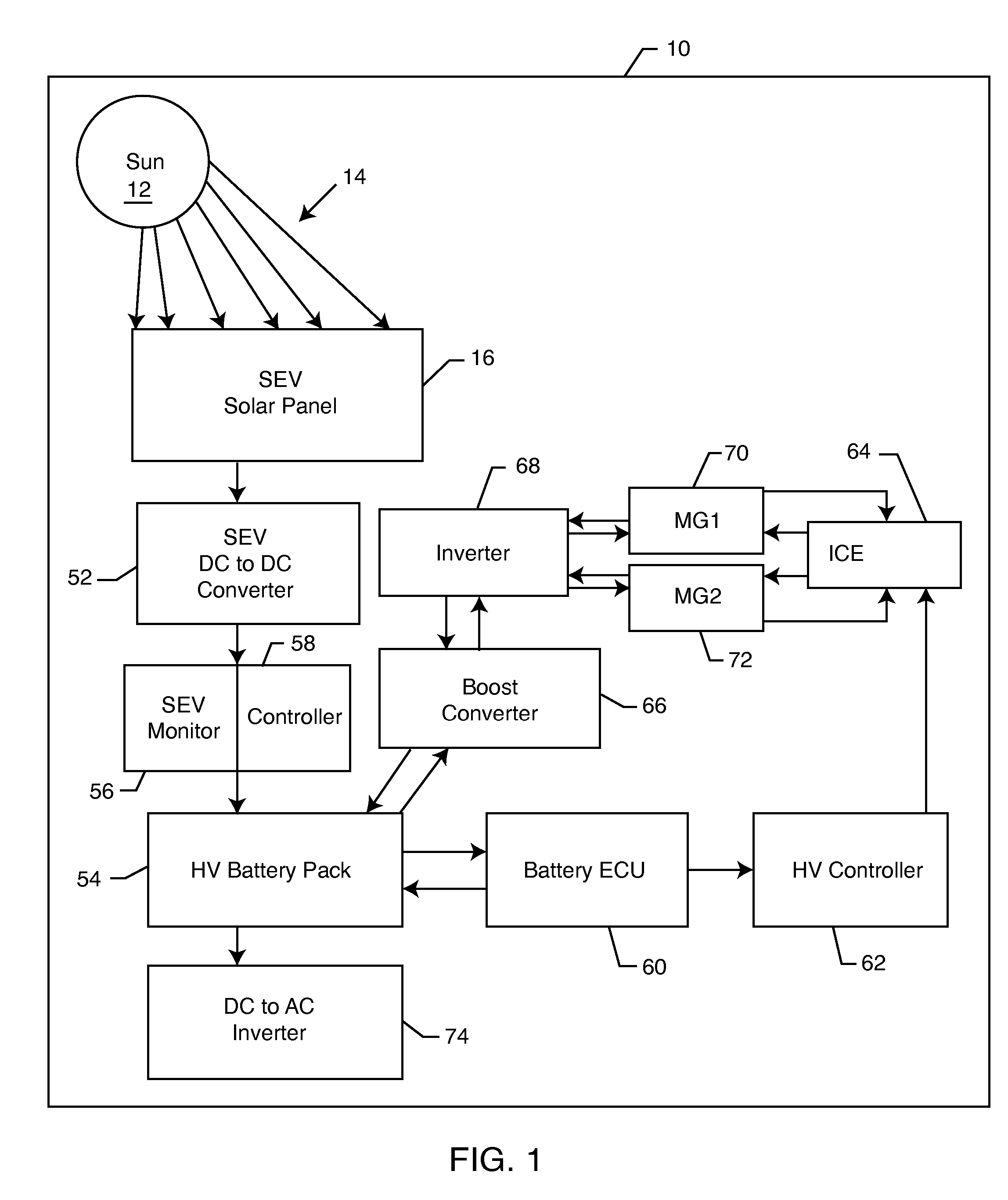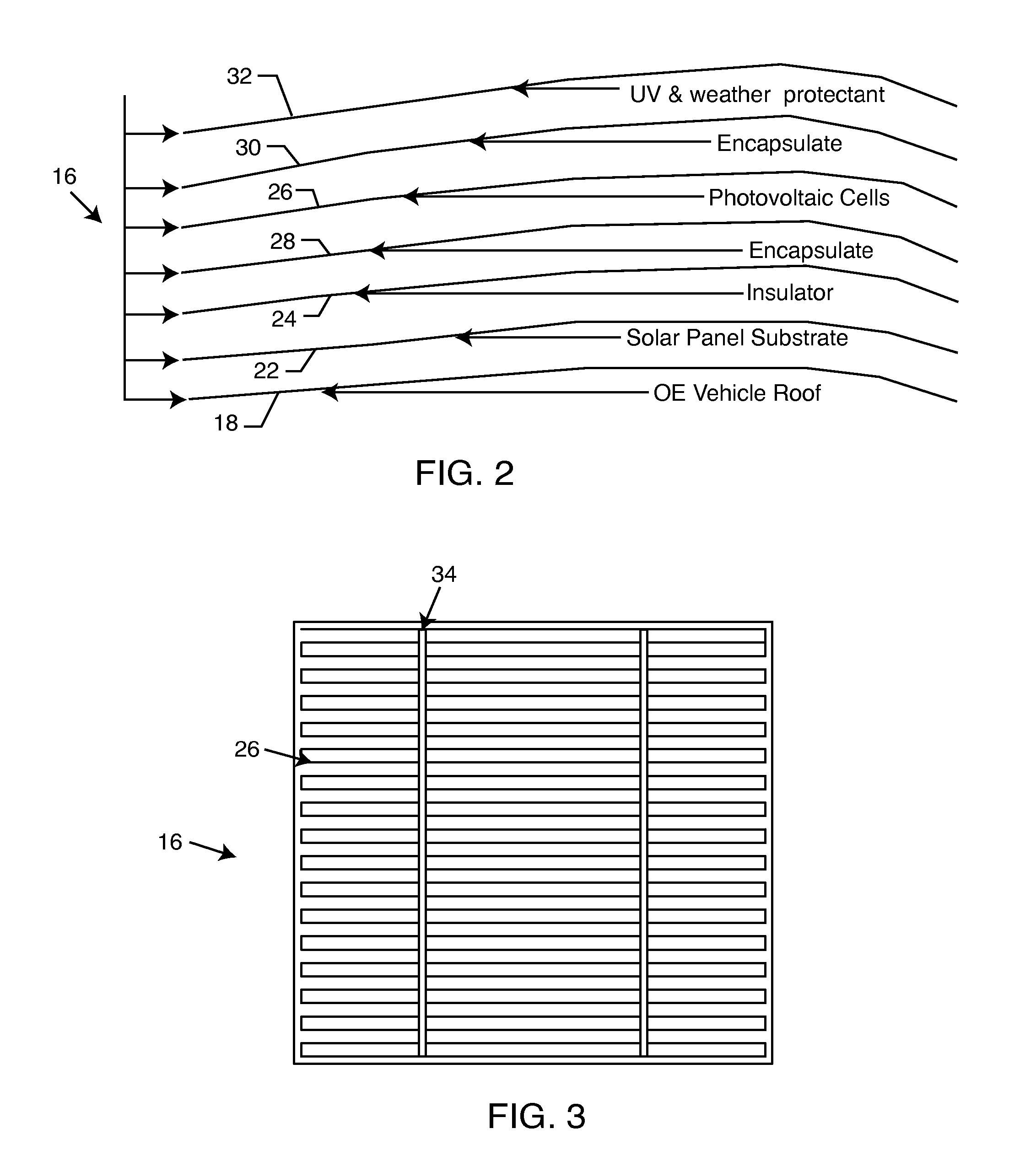Solar energy system for hybrid vehicles
a hybrid vehicle and solar energy technology, applied in hybrid vehicles, light radiation electric generators, electrochemical generators, etc., can solve the problems of increasing vehicle cost and weight, negatively affecting efficiency, and how far the vehicle can drive, and achieve the effect of efficient development of sufficient low energy direct current (dc) electrical energy
- Summary
- Abstract
- Description
- Claims
- Application Information
AI Technical Summary
Benefits of technology
Problems solved by technology
Method used
Image
Examples
Embodiment Construction
[0020] As shown in the exemplary drawings for purposes of illustration, the present disclosure for a solar energy system for a hybrid vehicle is referred to generally by the reference numeral 10. Turning now to the representative figures in the specification, FIG. 1 illustrates the basic energy flow of a solar energy system 10 as incorporated into the electrical system of a hybrid vehicle. In FIG. 1, a sun 12 irradiates sunlight 14 upon a solar panel 16. FIG. 7 shows the solar panel 16 sized and configured to overly a roof 18 of a hybrid vehicle 20 (FIG. 7). A person of ordinary skill in the art will readily recognize that the solar panel 16 could be configured to fit the roof 18 of vehicles having many different configurations. The hybrid vehicle 20 illustrated in FIG. 7 is merely a sample embodiment. The solar panel 16 could be utilized in vehicles that include, but not limited to, cars, trucks, sport utility vehicles, commercial vehicles, buses, and other vehicles having a roof o...
PUM
 Login to View More
Login to View More Abstract
Description
Claims
Application Information
 Login to View More
Login to View More - R&D
- Intellectual Property
- Life Sciences
- Materials
- Tech Scout
- Unparalleled Data Quality
- Higher Quality Content
- 60% Fewer Hallucinations
Browse by: Latest US Patents, China's latest patents, Technical Efficacy Thesaurus, Application Domain, Technology Topic, Popular Technical Reports.
© 2025 PatSnap. All rights reserved.Legal|Privacy policy|Modern Slavery Act Transparency Statement|Sitemap|About US| Contact US: help@patsnap.com



